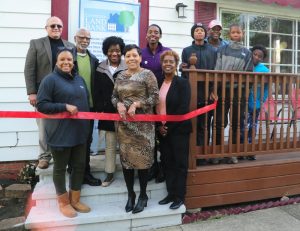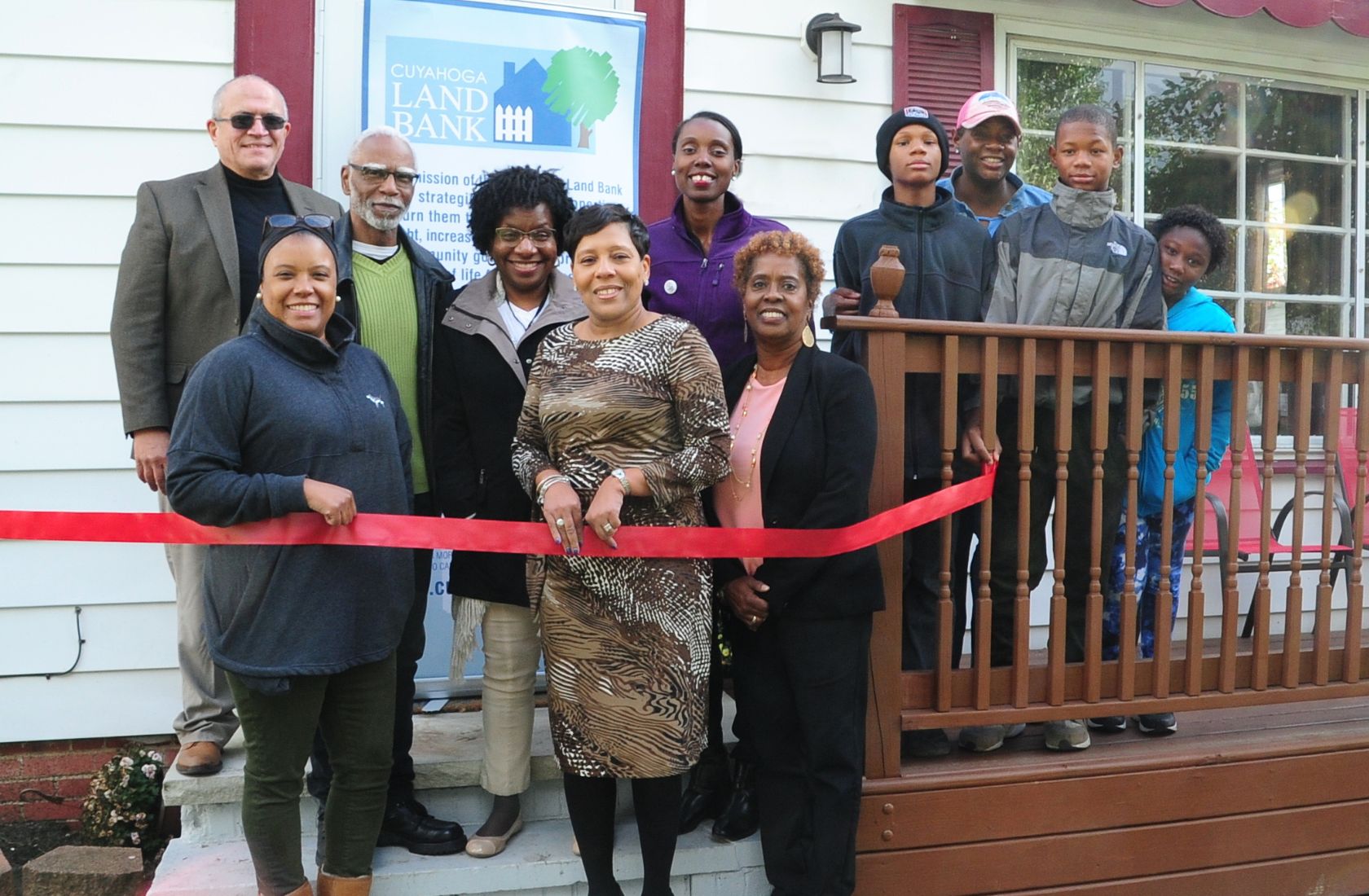
Some of the most gratifying work of the Cuyahoga Land Bank is when we can execute our “brick and mortar” mission in a way that supports human and social service needs. Over the years, the Cuyahoga Land Bank has provided more than 155 homes and buildings to social service, faith-based and nonprofit organizations that offer affordable housing, community stabilization, and skilled-training opportunities. The Cuyahoga Land Bank identifies suitable vacant homes and donates them to such mission-based organizations and places of worship. The houses are then renovated with funds raised through their philanthropic networks to meet the housing needs of veterans, persons in recovery, single mothers, victims of human trafficking, those aging out of foster care, and individuals re-entering the community after incarceration.
The Land Bank fields dozens of calls every year from up-and-coming nonprofit groups interested in acquiring a Land Bank property to further their nonprofit mission to these vulnerable populations. While some interested nonprofits have developed the necessary experience to renovate a home, it is often the case that many organizations do not have the capacity to qualify for a Land Bank property. Some need a little more coaching; others need donor support. Some might need to establish a working board of directors, and others might need more consistent programming. In those cases, the Land Bank refers them to the folks at Building Hope in the City (BHITC), a Christian mission organization with focus areas that include restoring neighborhoods and better equipping city leaders and organizations throughout the Cleveland area. It uniquely links local congregations and volunteers with the many people it serves to foster relationships and spur personal and community transformation.
“I try to give them a vision of what it looks like to work with the Cuyahoga Land Bank,” says Vatreisha Nyemba, BHITC’s Community Development Director. “Many of these groups are doing great work in the community but are not ready as an organization to tackle the complexities of a housing renovation. Because housing is not going to be the thing that ignites their vision, I encourage them to do what they do best with their existing talents, skills and resources and stay focused first on their mission. While housing is crucial to family and community stabilization, the next step for many organizations may be to offer much-needed programming at libraries or in churches, serve people on the streets, partner with neighborhood schools, host workshops, take kids on trips, or provide support in local prisons or shelters right where potential participants are currently located. Some activity should be underway before seeking to take on a renovation project for a particular vision.”
Vatreisha works with these organizations – sometimes for several years – connecting them with the nonprofit ecosystem to help them strengthen their organization. When they return to the Land Bank, they are better prepared to take on the challenge of transforming a vacant and abandoned property into housing for a vulnerable population or other use benefitting the community.”
“I love that the Land Bank keeps this door open to these often smaller but very passionate organizations,” says Vatreisha. “We need these people who are thinking creatively about the community’s social service needs. They just need a little guidance. I love working with the Cuyahoga Land Bank and to be a welcoming person who listens to these smaller organizations and their vision. I strive to bring encouragement and relevant direction. I’m here to be their biggest cheerleader while simultaneously bringing their feet to the ground with practical next steps and things to consider regarding the desire to take on a property. I want to help them do this right, so they are successful.”

